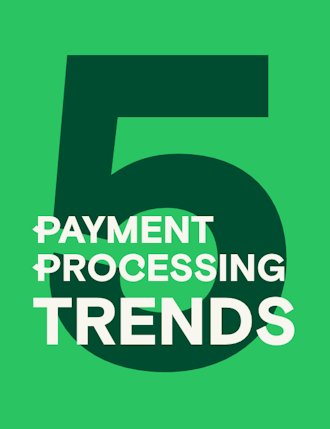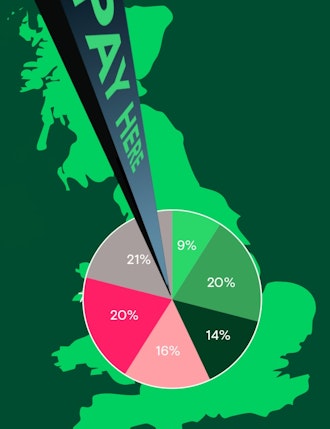Technology introduced countless innovations that helped enhance our daily lives. Whether it’s to order your daily coffee online or automate the tracking of your expenses, tech companies provide ways to make living more convenient. Explore some of these innovations through 6 FinTech trends listed below.
The emergence of financial technology (FinTech) provided numerous opportunities and benefits to clients looking to maximize their financial processes and operations. Despite the COVID-19 pandemic with its plethora of lockdowns and social distancing protocols, the industry allowed businesses to continue their transactions by utilizing online and digital platforms for its consumers.
The industry is a strong base for innovation in the coexistence of finance and tech, producing platforms that enable consumers to fully utilize their financial capabilities without limits. To give further insight, this blog post will discuss key emerging trends in the FinTech industry and how your business can take full advantage of such trends.
The global landscape of the FinTech industry
The FinTech industry has been assertive in its development to provide streamlined and automated financial services to its clients. It has proved to be one of the leading industries worldwide, with a market value of over US$110 billion in 2020 alone. By 2030, the industry is foreseen to reach US$698 billion.
Countries such as the US and China are identified as the leading hubs worldwide for FinTech Development. Moreover, cities like Beijing, San Francisco, and New York are dubbed as the top financial hubs in the world.
Key trends in the FinTech industry for 2022
As the FinTech industry shapes the future of financial services, companies have been continuously innovating new ways to provide a more seamless and streamlined experience when handling finances. Its consumers contribute greatly in the drive to improve financial management and operations, whether it’s for personal or commercial use.
The implementation of new technology welcomes a new wave of innovation in the FinTech space.
Here are six FinTech trends you should lookout for in 2022.
1. The rise of Neo-banks & digital wallets
Neo-Banks and Digital Wallets are FinTech software that provide financial services, similar to that of a traditional bank, to consumers through a more convenient and relaxed method. Engaging in traditional banks has always presented barriers when it comes to market entry. However, as countries have relaxed their regulations to compete with its ease of doing business to competitors, Neo-banks and wallets have penetrated and are seen to dominate the market in the years to come. Valued at over US$35 billion, the neo-bank sector is seen to grow at a compound annual growth rate of 47.7% within the next eight years.
2. Artificial intelligence (AI) and machine learning (ML)
It’s no surprise that the development of AI and ML has emerged into the FinTech industry. FinTech companies are engaging in AI and ML software to help boost its capabilities in providing streamlined and automated financial services, which could equate to faster transactions and processes between clients.
AI and ML allow faster processing of large data sets where, through data-driven algorithms, companies can develop accurate and detail-oriented conclusions when providing service to clients. Such is mostly seen in insurance policies and evaluation for clients availing for their services.
3. Real-time cross border payments
Over more than 60 countries utilize real-time cross border payments from small to large transactions. Several companies, such as PayPal, also offer platforms that allow them to easily send money in their local currency and be automatically converted to the recipient’s currency. Cross border operations enable companies to expand their reach beyond their local market, catering to multiple currencies in real-time. In the US, approximately 40% of large enterprises adopted real-time payments in their financial transactions. Explore how the Aevi platform can enable cross-border payments.
4. Embedded finance
Embedded Finance is a collective term for a range of financial services which are implanted into non-financial products and services. Such allows the integration of financial services into Application Programming Interfaces (APIs). A key takeaway for embedded finance is the growing popularity of the “Buy now, pay later” scheme, which allows the consumer to purchase items in advance without the need to provide payment, nor do they need to provide bank details, straight away.
5. Integration of crypto and NFTs
Traditional banking and similar platforms are seen to jump on the bandwagon of crypto-financing and NFTs. Its ability to speedily process transactions can accelerate financial services such as transfers, payments, and investments enables companies to maximize financial services with clients. Doing so also introduces a higher level of security between transactions.
6. Platform-as-a-Service
Implementing Platform-as-a-Service (PaaS) into financial institutions allows them to actively adapt to evolving regulations without delay. PaaS provides institutions with the infrastructure to perform a variety of tasks, from team collaboration, resource management, payment processing, and credit risk management. Interested? Check out our cloud-based payments platform.
Take advantage of FinTech trends for your business in 2022
FinTech is an ever-growing industry that invites many opportunities to expand and improve financial solutions to clients. As technology and ways of living continue to evolve, staying on top of key industry trends allows you to ensure that your company is ahead of the competition, while providing innovative and leading industry technology to your clients. Want more trends? Check out our look back on 2024 and predictions for 2025 here.
Follow us on LinkedIn for more industry news.
Interested in reading more around this subject? Here are some useful articles…













